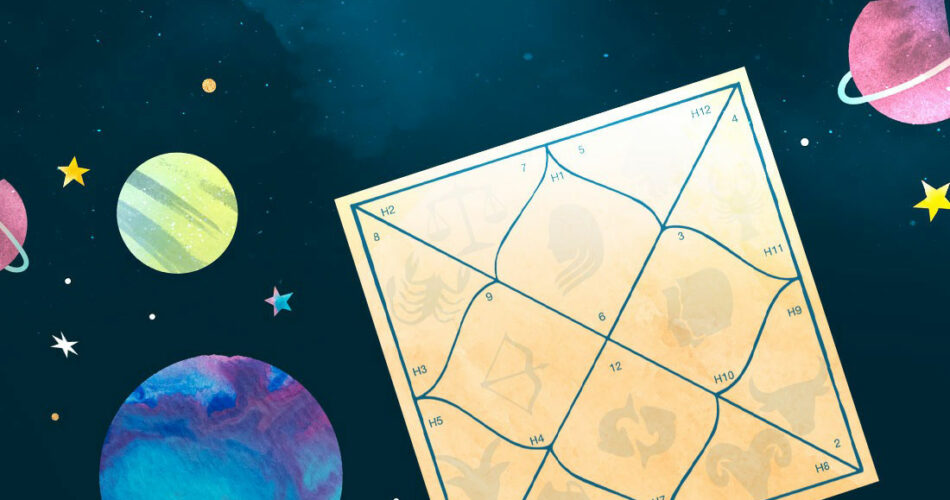In Vedic astrology, the twelve houses of a birth chart are divided into four groups, each linked to a major life goal from Hindu philosophy known as Purusharthas. “Purushartha” translates to “objectives” or “goals of a person.”
These four goals are Dharma (duty/moral values), Artha (prosperity/economic values), Kama (pleasure/desires), and Moksha (liberation/spiritual values).
In the birth chart, each group of three houses, along with the placement of planets within these houses, is dedicated to one of the key aspects of life—Dharma, Artha, Kama, or Moksha. These groupings influence how we approach these essential life areas, guiding our decisions and shaping our journey.
Get your birth chart on the align27 app!
Dharma Houses (1, 5, 9)
Dharma refers to one’s duty, righteousness, and moral obligations. It represents the path we are destined to follow. In astrology, the 1st, 5th, and 9th houses are considered Dharma houses. They relate to self-awareness, creativity, and higher learning or spirituality, respectively.
- 1st House: Focuses on self, personality, and physical body.
- 5th House: Related to creativity, romance, children, and personal projects.
- 9th House: Deals with higher learning, philosophy, long journeys, and spirituality.
When planets reside in these houses, they emphasize matters related to finding and fulfilling our life purpose or duty. For example, if Jupiter (a planet associated with wisdom and expansion) is in the 9th house, spiritual growth or higher education becomes our duty and path.
How many planets do you have in Dharma Houses?
Artha Houses (2, 6, 10)
Artha pertains to wealth, resources, and the means necessary to live. The 2nd, 6th, and 10th houses are Artha houses. These houses are associated with material security and your contributions to the world through your career and other ventures.
- 2nd House: Concerns money, possessions, and personal assets.
- 6th House: Associated with health, service, and daily work routines.
- 10th House: Relates to career, reputation, and major life achievements.
Planets in these houses focus on acquiring and managing resources. For instance, if the Sun is in the 2nd house in Aries, it highlights a proactive approach to generating wealth and managing finances.
How many planets do you have in Artha Houses?
Kama Houses (3, 7, 11)
Kama involves the pursuit of pleasure, love, and personal desires. The 3rd, 7th, and 11th houses are linked to this pursuit. These houses reflect our relationships and interactions with others, and how we fulfill our desires.
- 3rd House: Deals with communication, siblings, and short trips.
- 7th House: Focuses on romantic and business partnerships.
- 11th House: Relates to friendships, groups, and aspirations.
If the Moon, which deals with emotions and comfort, is in the 11th house in Taurus, it suggests seeking fulfillment through gains, friendships and social circles, often with a stable and steadfast approach to achieving personal goals.
How many planets do you have in Kama Houses?
Moksha Houses (4, 8, 12)
Moksha represents liberation and spiritual freedom from the cycle of birth and death. The 4th, 8th, and 12th houses address personal transformation, the unconscious, and the end of cycles.
- 4th House: Pertains to home, family, and emotional foundations.
- 8th House: Concerns transformation, shared resources, and life’s mysteries.
- 12th House: Deals with the subconscious, hidden matters, and endings.
Planets in these houses often suggest a focus on spiritual and psychological growth, and on freedom from bondages. For example, if Venus is in the 12th house, it could indicate finding love that aims at spiritual growth through relationships.
How many planets do you have in Moksha Houses?
Each planet in a particular house will operate through the lens of that house’s Purushartha (Dharma, Artha, Kama, Moksha), influencing how we approach life’s different aspects and experiences.


